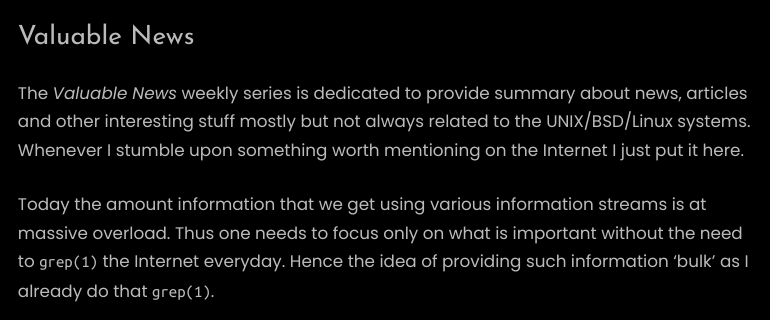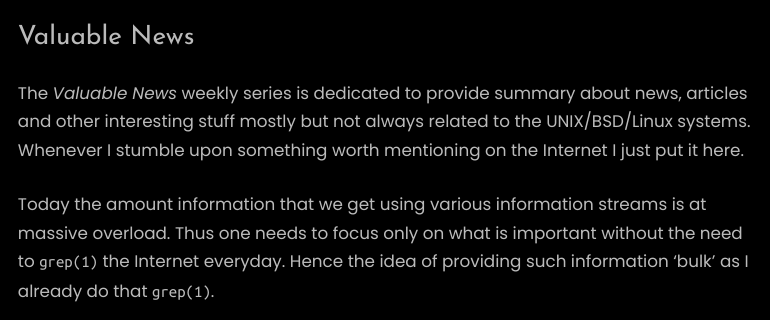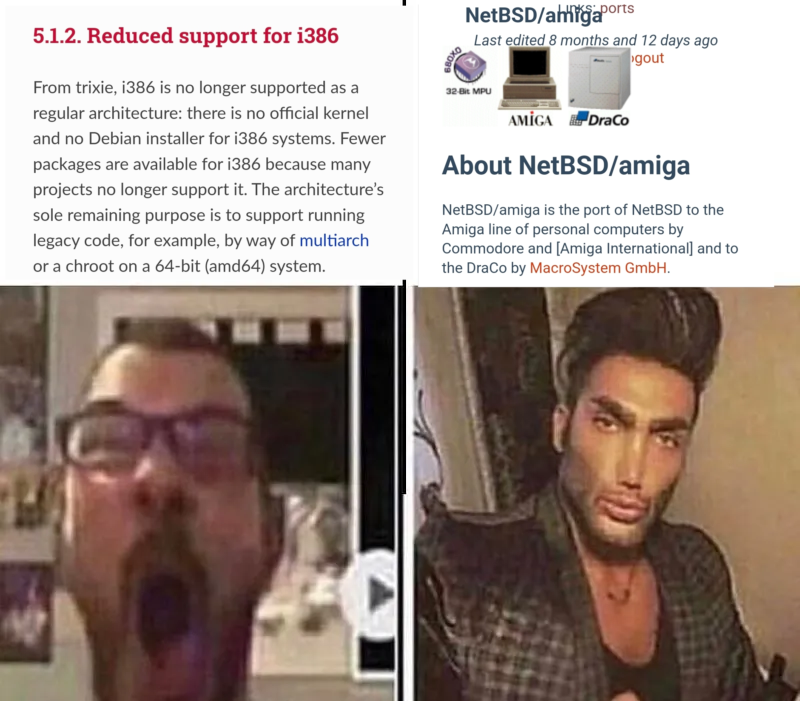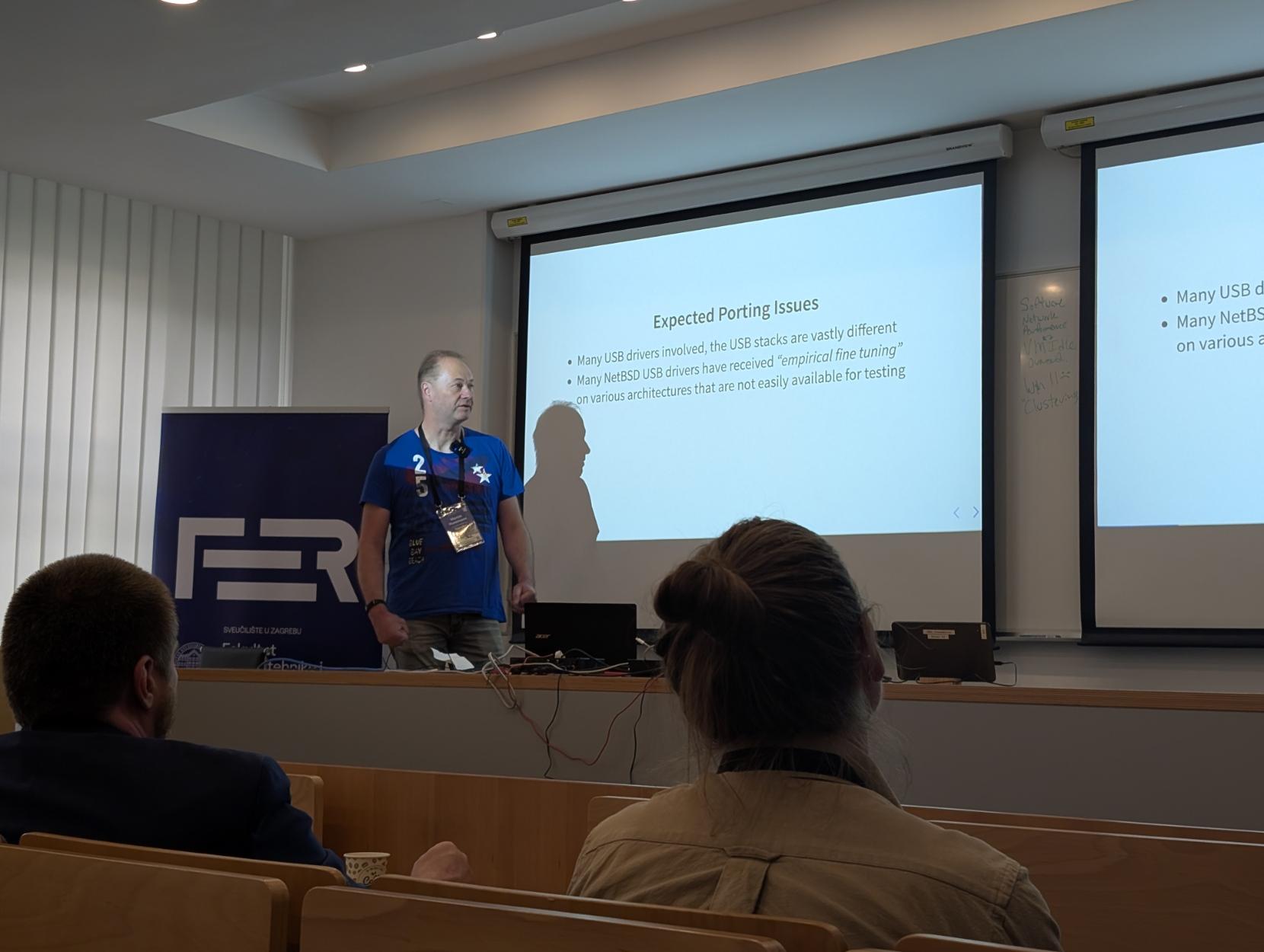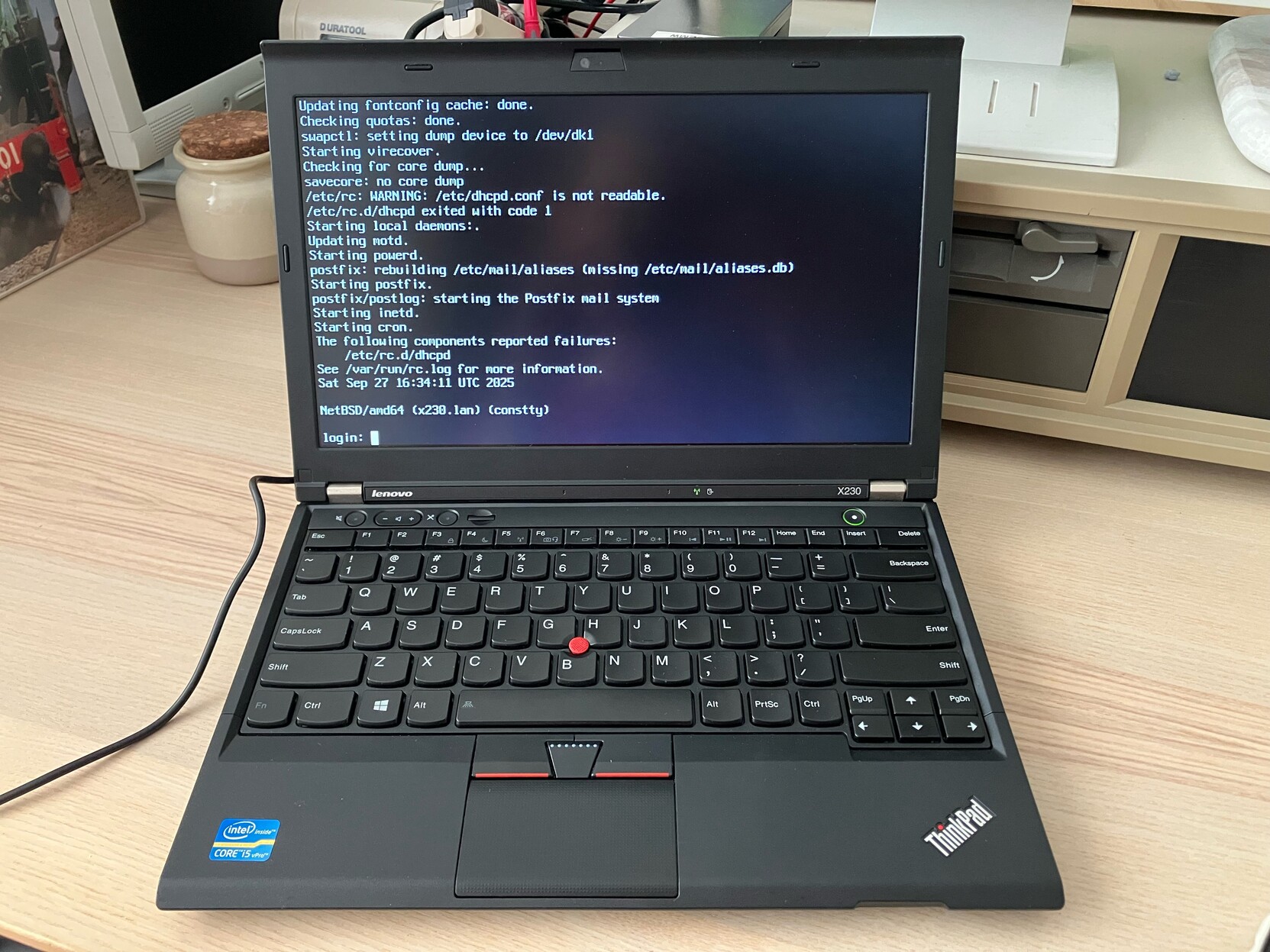Search results for tag #NetBSD
Latest 𝗩𝗮𝗹𝘂𝗮𝗯𝗹𝗲 𝗡𝗲𝘄𝘀 - 𝟮𝟬𝟮𝟱/𝟭𝟬/𝟬𝟲 (Valuable News - 2025/10/06) available.
https://vermaden.wordpress.com/2025/10/06/valuable-news-2025-10-06/
Past releases: https://vermaden.wordpress.com/news/
#verblog #vernews #news #bsd #freebsd #openbsd #netbsd #linux #unix #zfs #opnsense #ghostbsd #solaris #vermadenday
Latest 𝗩𝗮𝗹𝘂𝗮𝗯𝗹𝗲 𝗡𝗲𝘄𝘀 - 𝟮𝟬𝟮𝟱/𝟭𝟬/𝟬𝟲 (Valuable News - 2025/10/06) available.
https://vermaden.wordpress.com/2025/10/06/valuable-news-2025-10-06/
Past releases: https://vermaden.wordpress.com/news/
#verblog #vernews #news #bsd #freebsd #openbsd #netbsd #linux #unix #zfs #opnsense #ghostbsd #solaris #vermadenday
On remet ça ? #virtualisation avec #NetBSD et #NVMM, tout de suite sur https://twitch.tv/ahp_nils ! #sysadmin #devops #twitchfr #twitchstreamer #TwitchStreamers #BSD #qemu
10.0: alpha 14719 (+1923)
10.0: earmv4 9099 (+25)
10.0: m68k 7155 (+134)
10.0: sparc64 12568 (+2429)
10.0: vax 6571 (+364)
11.0: aarch64eb 10038 (+8340)
11.0: earmv4 337 (+304)
11.0: m68k 670 (+550)
11.0: riscv64 2656 (+1681)
11.0: sh3el 779 (+767)
11.0: vax 840 (+702)
5 Days of using NetBSD on a Laptop for work and play - Article by Jesse Smith on DistroWatch #BSD #NetBSD https://distrowatch.com/weekly.php?issue=20250922#netbsd
It feels strange to live in a world where the most open 7th gen video console (PlayStation 3, Wii, Xbox360) is the Wii from Nintendo. I mean there is a image for the Nintendo Wii on the front page of netbsd.org. I do not see suppor for PlayStation3 or Xbox360 on netbsd.org. Was very different before Sony removed the OtherOS feature from its PS3.
#Nintendo #Wii #NetBSD
I have uploaded the slides for my #EuroBSDCon2025 #ebc25 talk about creating products with #NetBSD (and why I chose NetBSD in the first place)
https://www.netbsd.org/gallery/presentations/sborrill/eurobsdcon2025/NetManager.pdf
 boosted
boostedIf you're paying attention, you may have noticed my recent #NetBSD bug updates often have a single "." on its own line at the end. That's because gnats works differently from Sendmail and ends the message with Ctrl+D 😡
Advanced Programming in the UNIX Environment
Week 3: Union Mounts and Whiteout Files
One of the file types we've encountered are those of type S_IFWHT, so called "whiteout" files. But what the hell is that?? Let's illustrate! We describe the concept of union mounts and see what happens when a file in the upper layer is removed while the same file still exists in the lower layer: a whiteout file is created to cover up the lower file.
If anyone is interested in what I had to say (and hand out) during my talk, the QR code at the end leads to http://anduin.net/l.htm - go grab your copy in any of three formats: Bootable floppy, zipped TheDraw files, or PDF (boo!).
I met too many awesome people to count, much less remember the names of everyone, but I truly hope those of you who want to reach out will do so. My DMs are open ;)
The social overload from this weekend will quickly turn into the pain of missing the company of this extended family. Can't wait to see you again in Brussels - or at any time before that if you visit Oslo!
#EuroBSDCon #EuroBSDCon2025 #EuroBSDCon2026 #RunBSD #NetBSD #OpenBSD #FreeBSD #BSD
Latest 𝗩𝗮𝗹𝘂𝗮𝗯𝗹𝗲 𝗡𝗲𝘄𝘀 - 𝟮𝟬𝟮𝟱/𝟬𝟵/𝟮𝟵 (Valuable News - 2025/09/29) available.
https://vermaden.wordpress.com/2025/09/29/valuable-news-2025-09-29/
Past releases: https://vermaden.wordpress.com/news/
#verblog #vernews #news #bsd #freebsd #openbsd #netbsd #linux #unix #zfs #opnsense #ghostbsd #solaris #vermadenday
Latest 𝗩𝗮𝗹𝘂𝗮𝗯𝗹𝗲 𝗡𝗲𝘄𝘀 - 𝟮𝟬𝟮𝟱/𝟬𝟵/𝟮𝟵 (Valuable News - 2025/09/29) available.
https://vermaden.wordpress.com/2025/09/29/valuable-news-2025-09-29/
Past releases: https://vermaden.wordpress.com/news/
#verblog #vernews #news #bsd #freebsd #openbsd #netbsd #linux #unix #zfs #opnsense #ghostbsd #solaris #vermadenday
I can barely resist the urge to ask,
"What's UNIX?"
https://www.reddit.com/r/freebsd/comments/1nsuw2t/comment/ngou32d/
The important thing is, I'll find it funny.
@lproven go on. Dare me to ask the question. You can refrain from answering, then eat popcorn whilst things unravel.
 boosted
boosted2025 - NetBSD - nicht nur für Toaster
50 Jahre BSD 👏
Ein schöner Vortrag von Benny Siegert zu #NetBSD
#Free and #opensource Software Conferece
Devinez quoi ? J'ai fait des devoirs cette semaine xD #virtualisation avec #NetBSD et #NVMM, tout de suite sur https://twitch.tv/ahp_nils ! #sysadmin #devops #twitchfr #twitchstreamer #TwitchStreamers #BSD #qemu
@kzimmermann Upgrade #NetBSD. I start each version with a fresh installation. I've tried to update a few times and it has never worked for me. A fresh installation is fast but it takes a while to build packages afterwards.
Heh, I hadn't used my #NetBSD machine in a while, and turns out that a whopping 295 packages were in the waiting list. Time to roll them out!
I wonder if it's time to run a full sysupgrade or something? I remember back in FreeBSD I would do a freebsd-update every two weeks or so, but looking at the docs seems to hint that this should be done only after a release change (or at least that's what I understood?)
@DianeBruce could also speak to this. I know I've seen her at just about every bsd conference that I've been to.
#EBC25 #RunBSD #FreeBSD #EuroBSDcon #EuroBSDCon2025 #OpenBSD #NetBSD
 boosted
boosted@rubenerd I had #NetBSD on my X240. Used ctwm ;) Moved it to an X270 though. The X240 now has #alpinelinux with a #kali container for teaching security and ethical hacking. The X240 incidentally has touch screen ;) Both machines are second hand, refurb. At the moment I use cwm on all my machines. There is also a Thinkcentre with OpenBSD.
#EBC25 #RunBSD #FreeBSD #EuroBSDcon #EuroBSDCon2025 #OpenBSD #NetBSD
 boosted
boostedYes! “New” ThinkPad X230 I bought as a writing machine is booting #NetBSD :’)
Even the chicklet/island keyboard is still so wonderful to type on.
Next steps: Wi-Fi, and either my tmux “terminal GUI” or maybe I should try ctwm!
 boosted
boostedThis is the number of packages from 2025Q2 that don't need to be recompiled:
10.0: alpha 12138 (-6788)
10.0: earmv4 8624 (-4054)
10.0: m68k 6900 (-3029)
10.0: sparc64 10124 (-5513)
10.0: vax 5957 (-3341)
Here are the final pkgsrc-2025Q2 package counts:
9.0: earmv4 4230 (still working on gcc 13)
9.0: m68k 3418 (+46)
10.0: aarch64eb 24677 (finished)
10.0: alpha 18926 (+564 - finished)
10.0: earmv4 12678 (+573)
10.0: m68k 9929 (+127)
10.0: sh3el 10669 (+3)
10.0: sparc64 15637 (+53)
10.0: vax 9298 (+54)
current: riscv64 11615 (+672)
 boosted
boostedMade it to #EuroBSDCon in time for lunch! :D
And I did not miss the _whole_ #NetBSD devsummit. Now listening to riastradh@ demo Mercurial and disrupting the demo by adding conflicting commits 😜
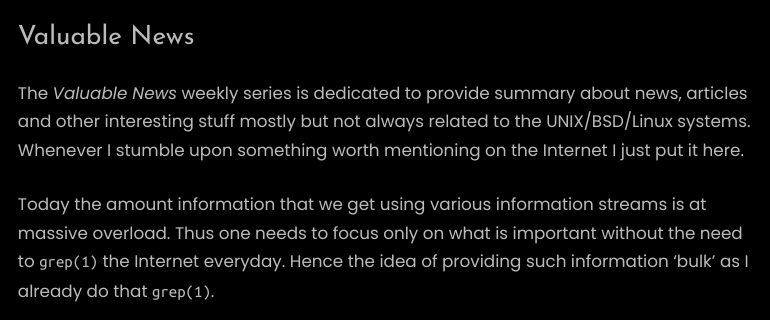

![[?]](https://zia.io/media/c7d30b21a674a70256affdc92d62b3c664a56e41b422a6fa74796f9af4cc391c.png)
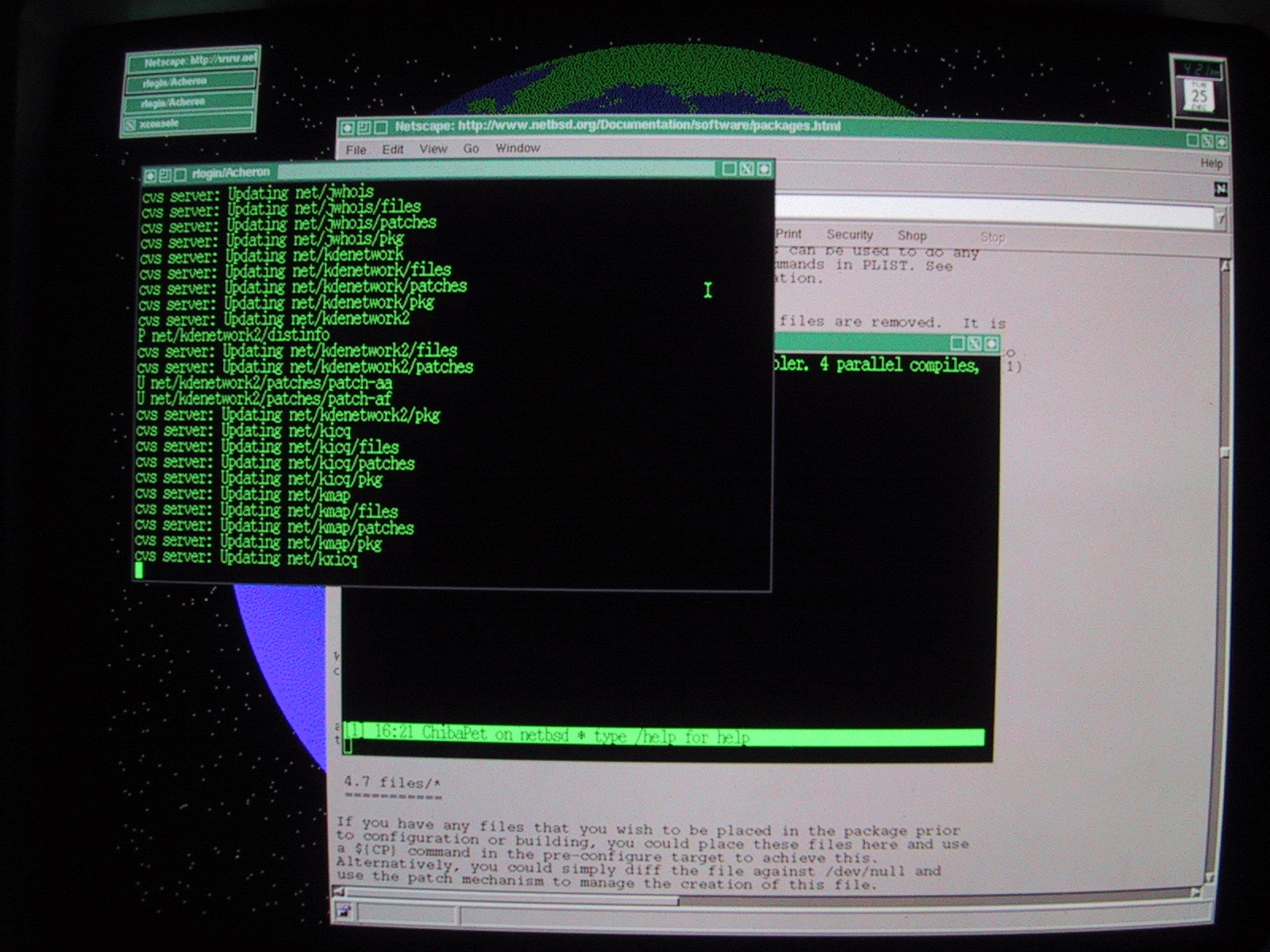
![[?]](https://pleroma.anduin.net/media/e42775318fd38a77b2c02300192e27e61861443424849feef9767918512fac8b.png?name=blob.png)
